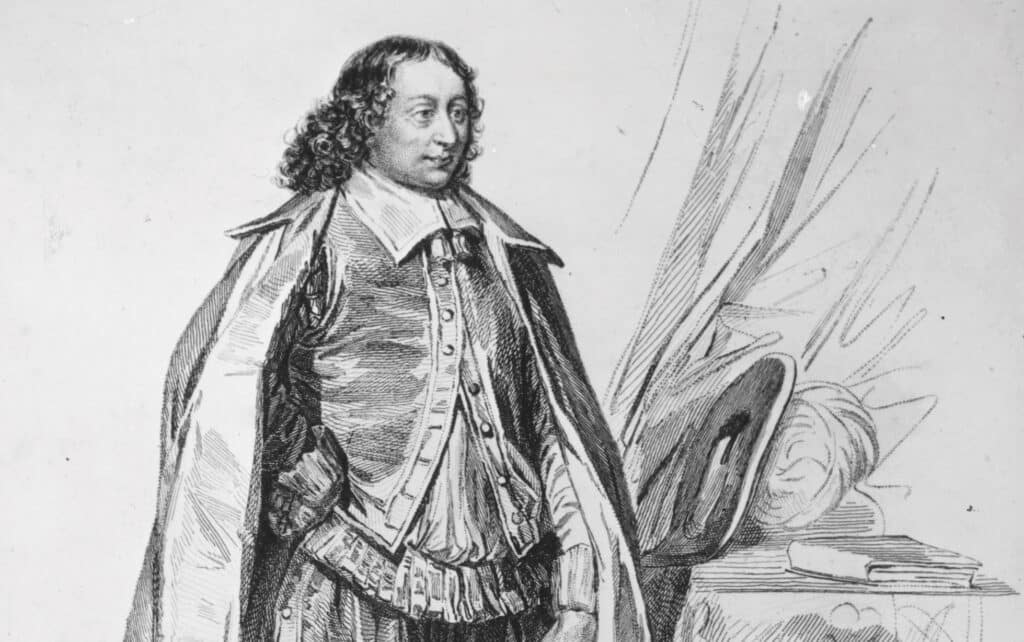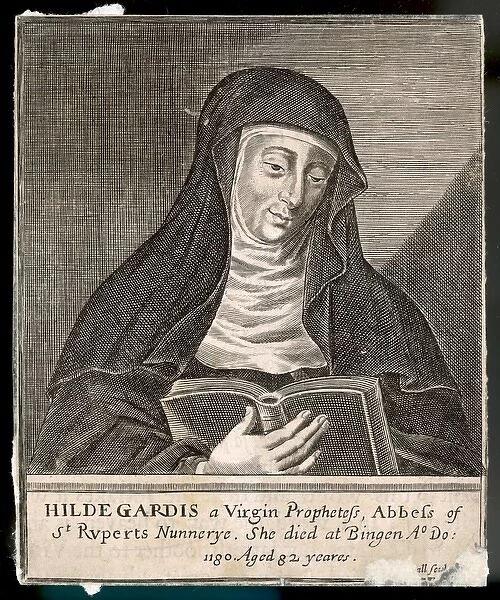Classical Echoes – 22 November 2024

J. S. Bach – probably the most influential composer of all time, who shaped classical music and defined musical trends and compositional techniques for all epochs and generations.
He was born into a family of multigenerational musicians and from a young age was influenced by the great Baroque music of Germany.
Though he redefined music as a from of art, many musical teachers make him seem like the first composer ever, and that nobody before him wrote music worth attention. Of course, this isn’t right, as even a genius like Bach actually learned many things from his predecessors.
So, in today’s article, we will discuss some of the best composers before Bach, what type of music they wrote, and how they influenced later generations.

D. Buxtehude’s portrait
Dietrich Buxtehude was one of the most important composers of the 17th century. A Danish organist and vocalist, he was famous for his excellent organ skills and chamber and vocal works.
Even though Buxtehude was born in Denmark, he spent most of his career in Germany, serving as an organist in different German churches. He wrote in many different styles of the early Baroque era. His works include various keyboard toccatas and preludes, as well as many chamber works, many of which were lost and remain unknown. However, his primary instrument was the organ. He was a master both as a player and a composer. His skills were so famous that they had a big impact on young Bach and Handel. To hear Buxtehude play, Bach walked over 250 miles (400 kilometers). Like J.S., Buxtehude was taught music primarily by his father, which made them both extremely passionate about becoming composers.Despite many of his works remaining lost today, in the 18th century Bach had much to learn from Buxtehude’s scores, which had a big influence on his evolution as a composer.
D. Buxtehude – Alleluia (yt. PeriodinstrumentfaN)
J. Pachelbel
A German composer and organist who was influenced by the South German musical school, Pachelbel is most known for his Canon in D, though his talent doesn’t end on this piece.
Born in Nuremberg in 1653, he was the son of a wine dealer. Unlike Bach or Buxtehude, who were born into musical families from top to bottom, it is unclear what drew Pachelbel to music and made him so successful.
Pachelbel was deeply connected to the Bach family, even becoming the godfather of one of Bach’s sisters. Despite Bach’s early musical genius, Pachelbel taught his eldest brother, Johann Christoph, and didn’t have much influence on Johann Sebastian as a mentor. After the death of his parents, Bach moved from Eisenach and studied with other musicians, including his older brother.
Pachelbel was quite popular and successful composer of his times. He was considered one of the most important musicians in so called South German musical school and wrote in many different styles for various instruments.
J. Pachelbel – Fugue for organ in E minor (yt. The Half-baked Organist)

H. Biber
Heinrich Ignaz Franz Biber was an Austrian-Bohemian composer of the middle Baroque period. Born in 1644, Biber studied violin and music theory. His music had a big impact primarily on Austrian musical world.
Not much is known about his early life and education. However, his exceptional skills in music, especially on the violin, led him to work at numerous courts.
While Bach and Buxtehude focused on the organ, Biber dedicated his career to the violin, being very skilled at it and considered one of the greatest violin virtuosos of Austria.
He also published many sacred, orchestral, and choral works, as well as solo violin sonatas and partitas. Although his works were appreciated by the public, he rarely performed in front of live audiences.
Biber was often criticized for his excessive musical experimentation, which clashed with the strict Baroque rules. He was very ‘brave’ as a composer and had extraordinary views on beauty that did not align with traditional standards.
Biber was prolific as a composer and also had a saturated personal life. With his wife Maria, they had 11 children, only 4 of whom survived to adulthood. His music had a significant influence on Austrian Baroque and contributed to the development of violin music.
Amazing polyphony in Biber’s Battalia for strings (yt. Musical Professor)

H. Purcell sketch
Henry Purcell (1659–1695) was an English Baroque composer, famous for his operas, organ music, and noble coronation pieces. As with many composers, he was born into a musical family. His father was a singer in the Chapel Royal and served King Charles II. Purcell received a musical education from his parents and later became a choirboy.
He was talented both as a musician and a technician, becoming an organ tuner at Westminster Abbey while only in his early twenties. Later, he joined King Charles II’s string orchestra, similarly to his father. Subsequently, he became an organist and composer at the Abbey.
During his active career, he also married and had 6 children, some of whom also became composers.
Purcell became famous primarily as a songwriter, with many of his songs published during his lifetime, gaining him fame. Although he wrote many chamber works, oratorios, and short organ pieces, he is best known for his operas and musical settings of various authors.
His most well-known opera, Dido and Aeneas, is a 3-act love story between Aeneas and the widowed Queen Dido. He also created musical settings for English literature, such as Shakespeare’s A Midsummer Night’s Dream.
During his short life, which lasted only 36 years, Purcell was the most important British composer of his time. As a result, he is considered one of the greatest English composers and one of the best composers of the Baroque era.
H. Purcell – Rondeau from Abdelazer (yt. Voices of Music)

Claudio Monteverdi was an Italian composer of the late Renaissance and early Baroque era. He was born in the Italian city of Cremona but spent most of his career in Venice, serving as Maestro di Cappella at the famous San Marco church. Like many composers, he served at church courts and composed much sacred and religious music.
Monteverdi is a key figure in music, especially for the Baroque era. Born in 1567 in the musical capital of Europe, Italy, he was part of a family where his siblings also had a musical talent. However, Claudio was the most prominent of them, obtaining high musical positions and composing for dukes and churches.
Monteverdi is one of the most important composers in the transition between the Renaissance and Baroque eras. He defined basic Baroque music principles, making music more complex and expressive than before.
He also pioneered very important musical genres, including opera. One of his most famous works is based on an Ancient Greek story, the L’Orfeo. He was the first to concentrate more on the musical component rather than the words, expressing ideas and emotions through sound.
His innovative use of music, complex melodies, polyphony, and long dissonances was deeply disregarded by traditionalists, especially in the churches where he worked, similarly to Biber. Monteverdi set the trend for the next century and generations of new composers, who inherited his techniques and knowledge.
Monteverdi – L’Orfeo (yt. GCSMeredith)

Famous not only for his ‘love’ of his numerous wives but also for his love of music, the English king was a patron of many artists. As the founder of the English church, he was an important contributor to art, especially music during the Renaissance era.
Although he wasn’t a composer in the traditional sense, being busy with more important political affairs, like wars with the French, in the 16th century the job of a composer differed. They often wrote entertaining and simple background melodies without big accent on actual musicality. Henry VIII received a good arts education. He played several instruments, including the lute and organ. He was also interested in musical theory and composition.
The common legend says that he wrote the famous Greensleeves for his wife Anne Boleyn, though the real composer remains unknown. This is true for many pieces attributed to him, as he likely employed musicians who composed tunes and dedicated them to the king, writing his name as the author.
Nevertheless, he wrote many melodies, especially songs with simple but catchy tunes, often similar to folk music.
Henry VIII – Pastime with Good Family song (yt. The City Waites – Topic)

Hildegard von Bingen was a German Benedictine abbess, famous as a writer, mystic, philosopher, and composer. She has more surviving pieces than any other medieval composer. She was one of the first people to compose both music and write the texts for it.
It’s hard to fully comprehend how important and sacred her works are to the musical world. She was the first composer to define music as a separate form of art. Before her, music was often viewed as an accompaniment to church services or entertainment, but not as an independent art form. Her music is so ancient that the time between her and Henry VIII is almost equivalent to the time between Henry VIII and today. It’s clear that her music is different from that of later composers, yet it represents the earliest seeds of the principles that subsequent musicians would develop. A key principle of her music is the Holy Monotony. This monotony symbolizes the unity of God as the only creator and father. Her deep connection to religion and her exploration of God’s creations are represented in her music. She primarily wrote spiritual and religious chants and songs. Hildegard was part of a noble German family and declared in her memoirs, Vita, that from early childhood, she experienced visions. These visions deeply influenced her spirituality and religious views. Her music is among the earliest examples of a person expressing their ideas and self through this form of art.St. Stanislav’s girl Choir: Hildegard’s De Spiritu Sancto (yt. zevnikov)